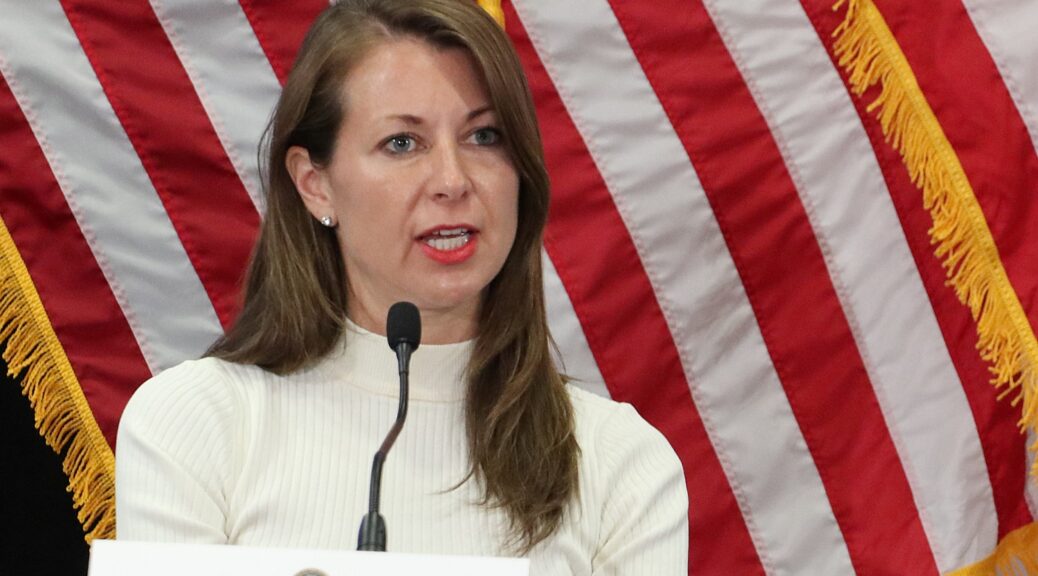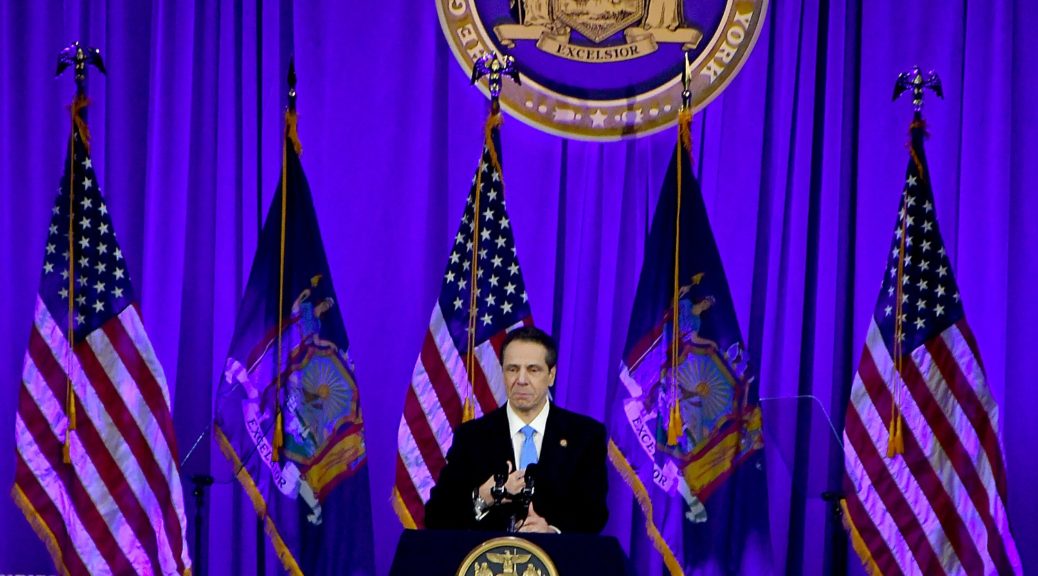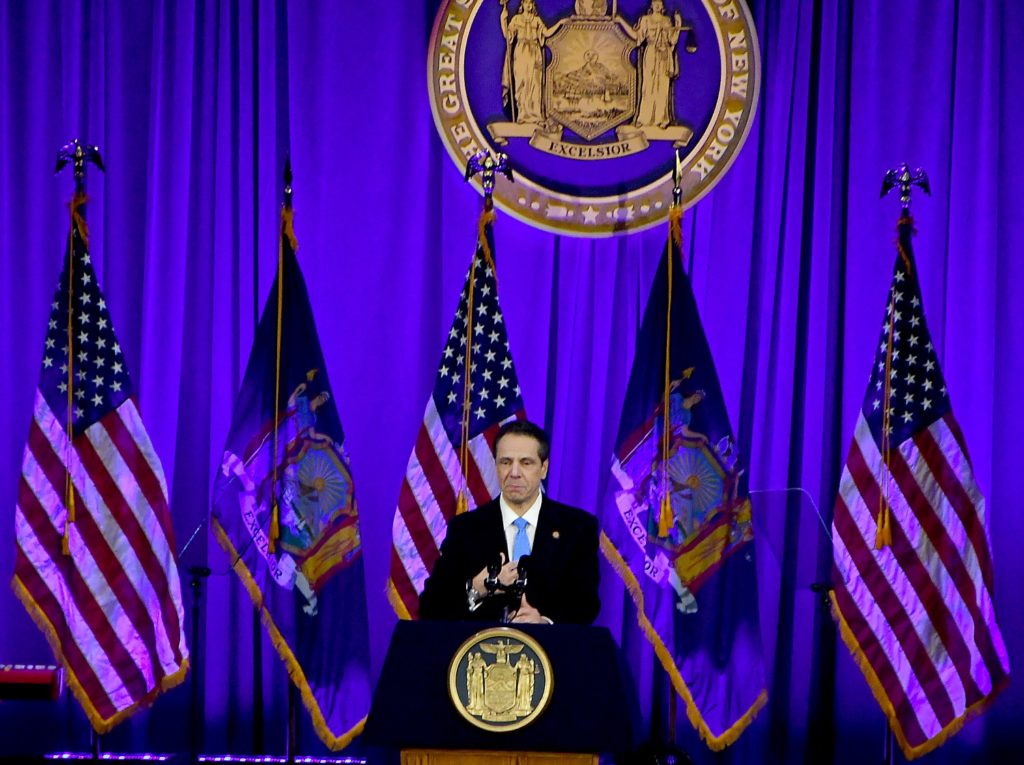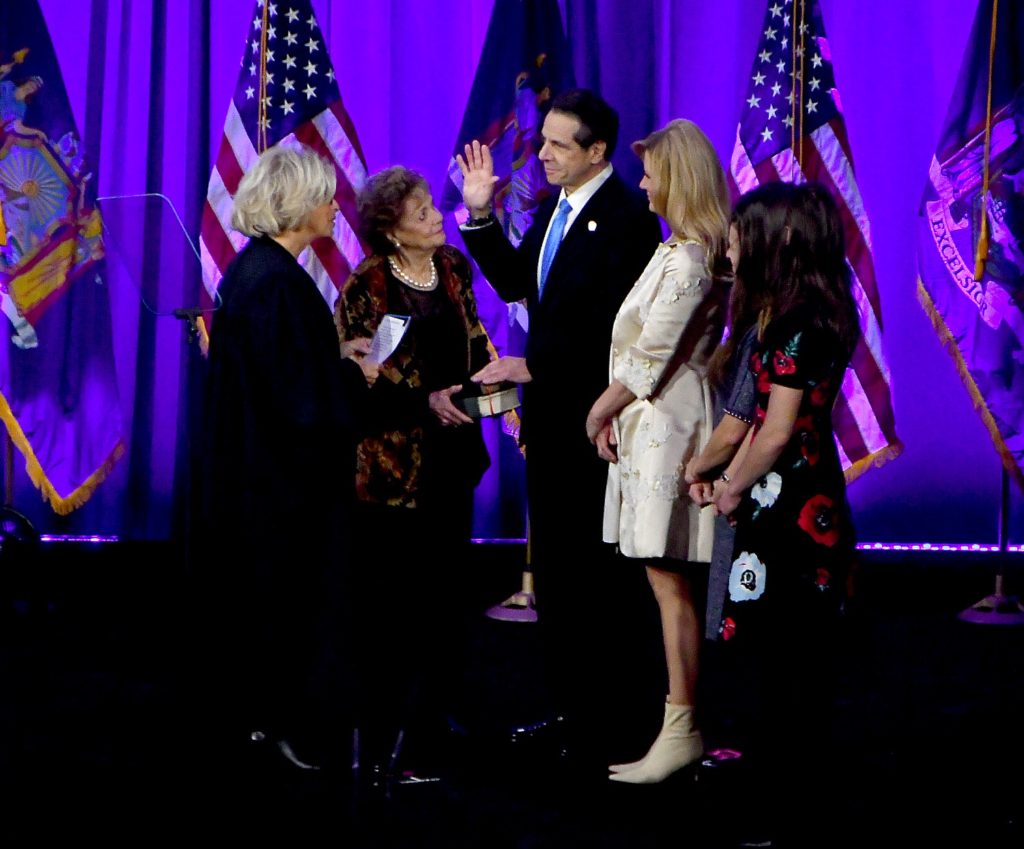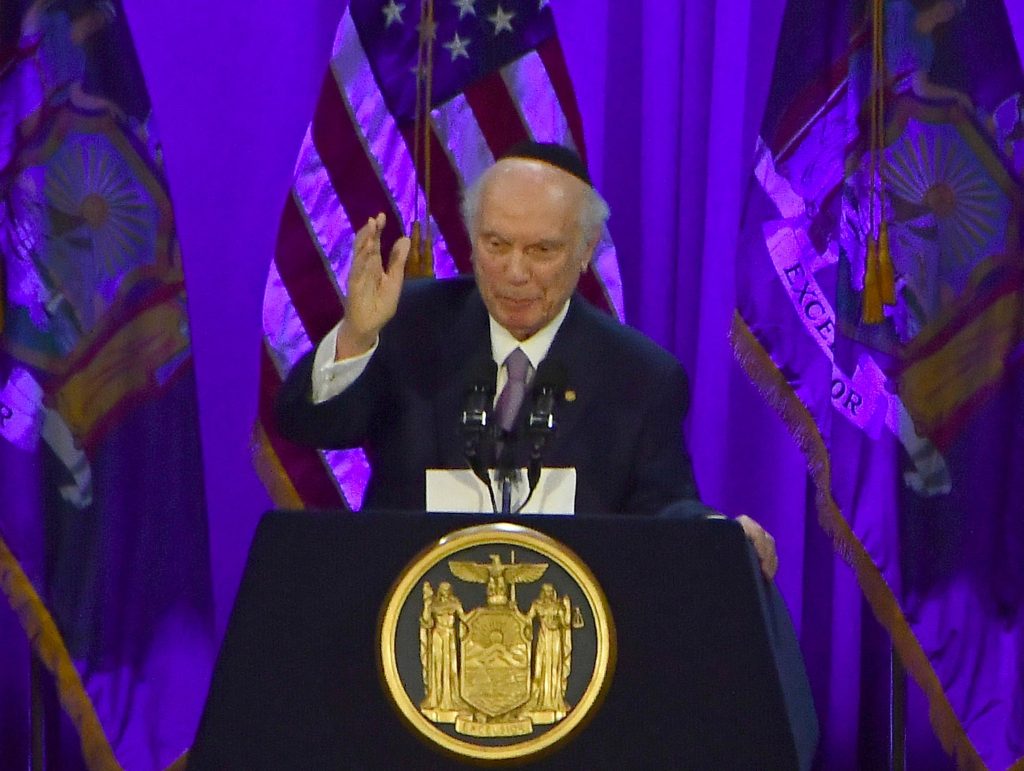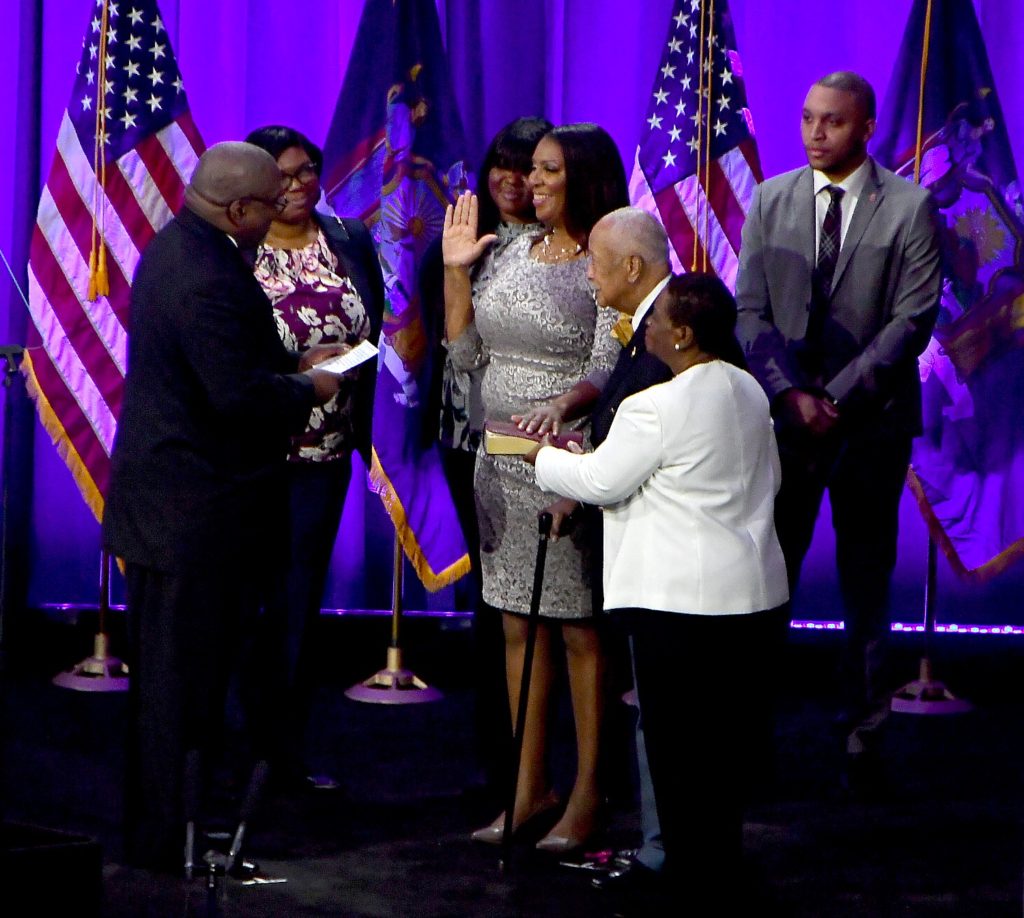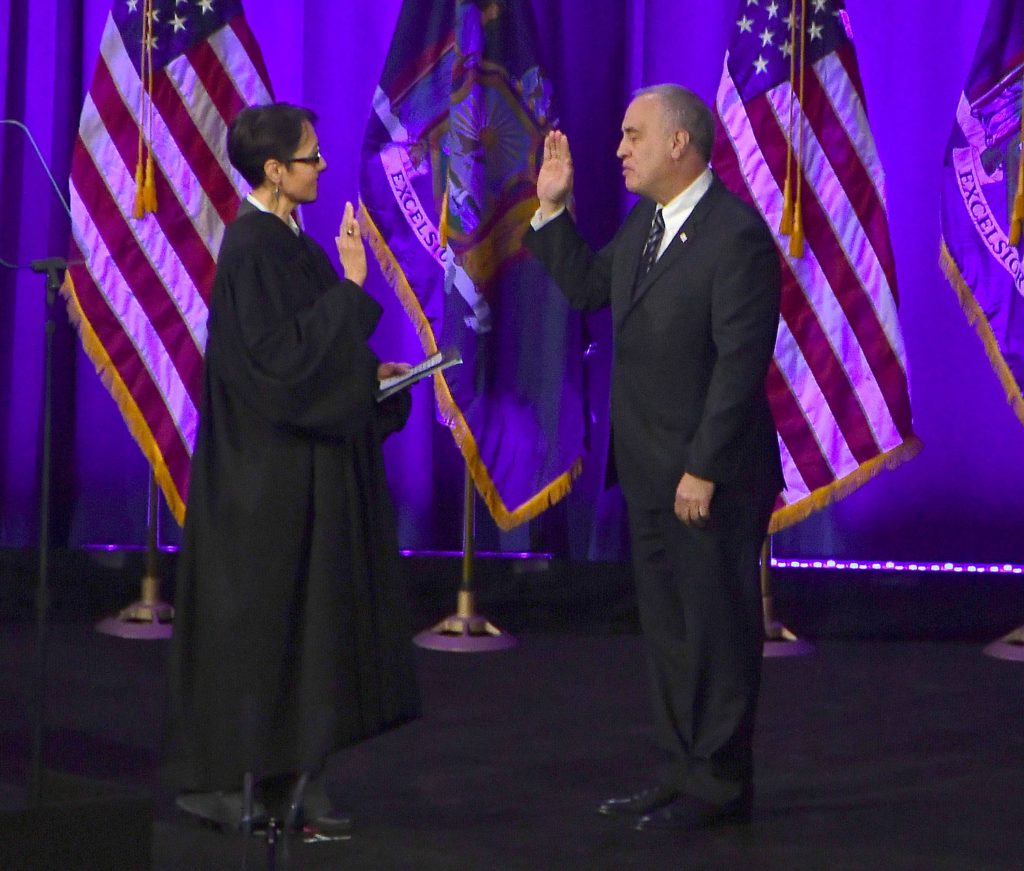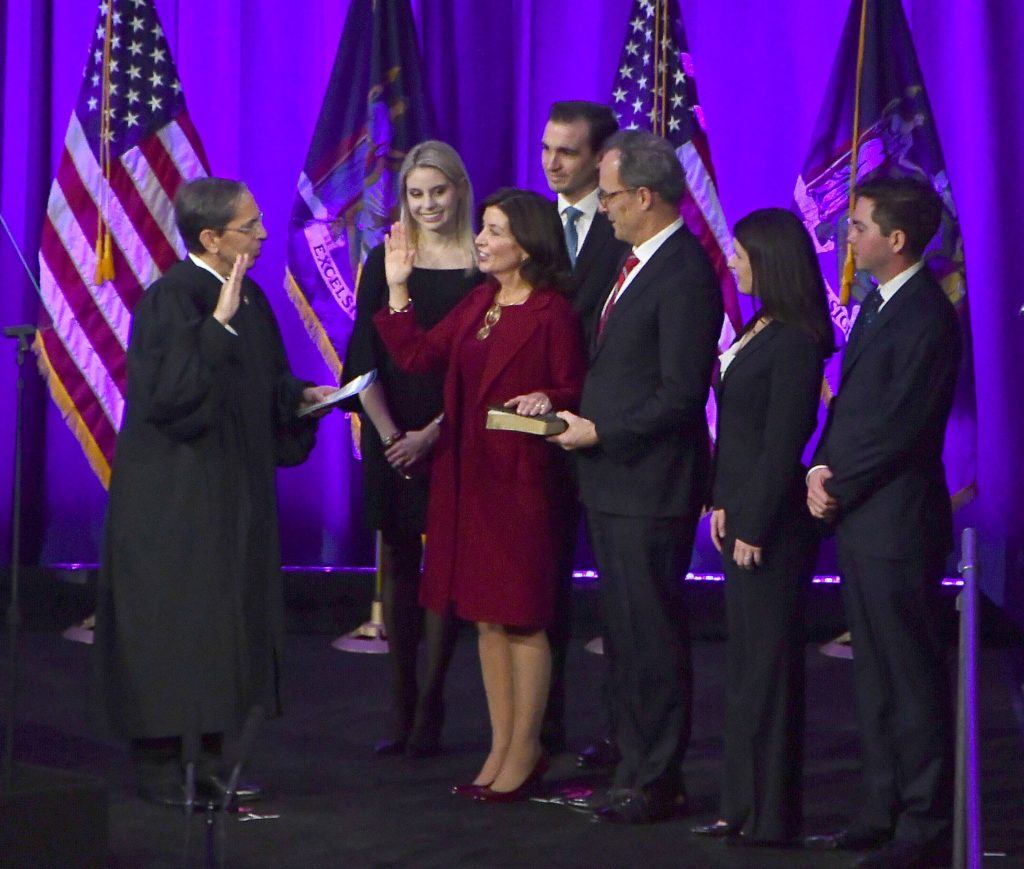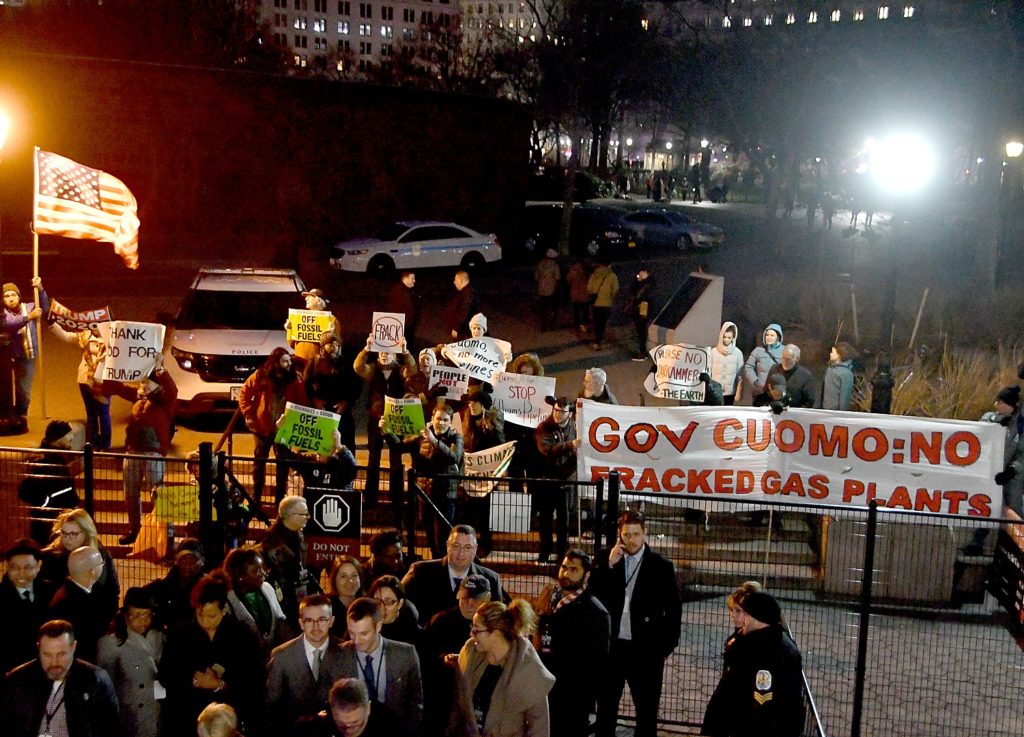
Secretary to the Governor Melissa DeRosa has issued a report to Governor Cuomo outlining the COVID-19 Domestic Violence Task Force’s initial recommendations to reimagine New York’s approach to services for domestic violence survivors. Governor Cuomo has accepted these recommendations in full and is directing the Office for the Prevention of Domestic Violence, along with other sister agencies of the Office of Children and Family Services, the Office of Temporary and Disability Assistance, the Office of Victim Services, the Division of Criminal Justice Services and the Department of Health, to use these recommendations to update and improve domestic violence services in New York State.
The recommendations identified by the Task Force recognize that the needs of domestic violence survivors vary greatly and there are different tools needed to allow each survivor maximum control over their situation including: mobile advocacy, flexible funding and housing choice. The recommendations offered by the Task Force are ready to be quickly implemented, cutting red tape and prioritizing cultural competency to better meet survivors where they are, give them what they need and set a foundation for continued innovation. The Task Force’s full report is available here.
“The COVID-19 pandemic has led to a drastic increase in the number of reported domestic violence cases in the state, leaving many survivors trapped at home with their abusers without access to help or resources,” Governor Cuomo said. “New York has been working to modernize our systems and the way we deliver services to survivors, and the recommendations made by the task force will help address this alarming spike in domestic violence incidents while building our systems and processes back better than they were before. I thank all the task force members for their work on this issue and for their dedication to ending domestic and gender based violence.”
“Domestic violence has been a pervasive problem in our society, and the COVID-19 pandemic has only exacerbated the situation and exposed the limitations of our traditional systems and methods,” Melissa DeRosa, Secretary to the Governor and Chair of the New York State Council on Women and Girls, said.”Since the uptick in domestic violence incidents during the pandemic, New York has taken aggressive actions to find new and innovative solutions to safely reach domestic violence survivors and provide critical, life-saving services. These recommendations build on our efforts and will help to transform and reimagine the way we provide services by giving survivors of domestic violence choice in their future and control of their decisions.”
Recommendation One: Using New Technologies to Reach More Survivors
The Task Force recommends that the Governor direct the Office for the Prevention of Domestic Violence to partner with national technical assistance providers to enhance knowledge around the use of technology to reach more survivors, including those in traditionally underserved populations and young people who may be impacted by intimate partner violence.
The Task Force also recommends that state agencies support programs in purchasing mobile devices and supporting technological infrastructure with federal funding related to the pandemic.
The Task Force also recommends that OPDV permanently incorporate a chat and text component into the functionality of the NYS Domestic and Sexual Violence Hotline.
Recommendation Two: Providing Flexible Funding to Meet the Diverse Needs of Survivors
The Task Force recommends that state agencies provide funding for local programs that can be used to support survivors’ safety, housing stability, transportation or other needs. In tandem with the mobile advocacy strategy, the state should allow programs to use funds to conduct community-based mobile advocacy, with an emphasis on housing stability, economic empowerment, and safety planning, to enable survivors to remain safe and stably housed in the community, if possible. Support provided by local programs should have more flexible parameters, should meet survivors’ needs as quickly as possible and should be available until the survivor feels safe. Further, the state should continue its commitment to partnering with the philanthropic and advocacy community, collaborating to leverage support, fill in the gaps where existing funds fall short and foster further innovation.
Recommendation Three: Providing More Housing Navigation Services
The Task Force recommends that state agencies connect providers to diverse housing-related funding streams to support a housing navigator system. Navigators will work with survivors to help them access available resources and support for housing beyond shelter and work with domestic violence advocates to help them better understand and assist with their clients’ needs around housing.
Additionally, domestic violence programs should designate a portion of one staff member’s salary to be used for housing navigation services, and community-based resources should incorporate this information into their resource database in order to fully support those victims. The role of the housing navigator would be to “bridge the gap” between domestic violence services and housing providers in order to ensure that the housing needs of domestic violence survivors are met.
Recommendation Four: Removing the Requirement that Domestic Violence Victims File a Police Report in Order to Access Victims of Crime Act Funding
The Task Force recommends that the Governor issue an executive order to remove the requirement that domestic violence victims file a police report in order to access the Victims of Crime Act funding. Many domestic violence survivors may be unable or unwilling to file a police report against their abuser, and expanding access to this funding while the state of emergency remains in effect will allow survivors to navigate the COVID-19 crisis with crucial financial support to seek safety.
Recommendation Five: Addressing the Needs of Black, Indigenous and People of Color Survivors of Gender-Based Violence
The Task Force recommends that the Council on Women and Girls establish a standing committee to prioritize and coordinate the creation of culturally competent service delivery designed to address the needs of Black, Indigenous and People of Color (BIPOC) survivors of gender-based violence. The committee will operate under a shared understanding of the impact of systemic racism on BIPOC survivors, and apply an intersectional lens to also consider sexuality, gender identity, age, disability, immigration status, and other identities and experiences in its work. The committee should meet bi-monthly to create an action plan for implementing these elements of service delivery across agencies, including comprehensive prevention strategies, improved language access and culturally competent outreach.
The Task Force also recommends that the state launch a paid and earned media campaign to promote prevention in a culturally competent way and reach specific populations across New York State.
Recommendation Six: Normalizing Domestic Violence Screening During Tele-Health Visits
The Task Force recommends that the Governor direct OPDV and the Department of Health to create guidelines for best practices in identifying and responding to intimate partner violence via tele-health. DOH and the Department of Financial Services should explore the rapid deployment of Medicaid (and commercial) payment mechanisms for intimate partner violence screening and response through telehealth, and OPDV should develop and provide training, technical assistance and appropriate literature to healthcare providers to encourage safe screening for domestic violence and appropriate responses when domestic violence is suspected or identified during tele-health visits.
Recommendation Seven: Coordinating a Program to Promote the Need for Representation of Immigrant Victims
The Task Force recommends that the Governor direct OPDV to coordinate a program with the New York State Bar Association and other bar associations and legal services providers to facilitate training and promote the need for representation of immigrant victims by large law firms through their pro bono programs.
Recommendation Eight: Launching a Public Awareness Campaign to Highlight Financial Abuse
The Task Force recommends that OPDV expands the functions of its existing text and chat line to serve as a conduit to address the various forms of financial abuse experienced by domestic violence survivors.
The Task Force also recommends the establishment of a pilot project with local domestic service providers to identify victims whose credit has been ruined as a result of their abuse and work to repair and rebuild their financial standing.
Recommendation Nine: Launching a New Prevention Initiative Specifically Directed at Educating Men About Domestic Violence
The Task Force recommends that OPDV exercises its oversight authority for abusive partner interventions programs in New York State and directs it to launch a new prevention initiative specifically directed at men, emphasizing the connection between domestic violence and harm to children.
Recommendation Ten: Setting the Stage for Future Progress
The recommendations offered in this report represent just a small fraction of the many ideas and best practices offered by the members of the Task Force over the course of their work. Among the long-term strategies to be further explored are policies around court innovation, ways to address the connection between child abuse and domestic violence, robust prevention programs, and more comprehensive data collection practices. While the Task Force will no longer formally convene, its members have generously offered to continue serving as resources for the state as it develops these long-term plans.
About the New York State COVID-19 Domestic Violence Task Force
In the first few months of the COVID-19 pandemic, data reported by law enforcement and domestic violence service providers pointed to an increase in domestic violence, with the New York State Domestic & Sexual Violence Hotline recording a 33 percent increase in calls for April 2020 compared to April 2019, and shelter occupancy rates upstate rising to 78 percent in April 2020, versus 59 percent in April 2019.
Since the pandemic began and the NYS PAUSE order went into effect, the state’s Office for the Prevention of Domestic Violence and all relevant state agencies have been working diligently to reach domestic violence survivors and connect them with information about services and support. OPDV also implemented a new, confidential text line and chat program for survivors across the state. The creation of the Task Force built on that work, convening 27 experienced and knowledgeable advocates, service providers and thought leaders from across the country to meet virtually, share their expertise and create written proposals.
Members of the COVID-19 Domestic Violence Task Force include:
- Scott Berkowitz – Founder and President, Rape, Abuse and Incest National Network (RAINN)
- Alejandra Y. Castillo, Esq. – CEO, YWCA USA
- Karma Cottman – Executive Director, Ujima, Inc: The National Center on Violence Against Women in the Black Community
- Nathaniel M. Fields – President and CEO, Urban Resource Institute (URI)
- Ruth M. Glenn – President and CEO, National Coalition Against Domestic Violence (NCADV)
- Peg Hacskaylo – Founder and CEO, National Alliance for Safe Housing (NASH)
- Jim Henderson – Probation and Domestic Violence Expert, Battered Women’s Justice Project
- Grace Huang, JD – Policy Director, Asian Pacific Institute on Gender-Based Violence
- Tandra R. LaGrone – Executive Director, In Our Own Voices
- Cindi Leive – Senior Fellow, USC-Annenberg School of Journalism and Communications
- Tonya Lovelace, MA – CEO, Women of Color Network Inc (WOCN)
- David Mandel – Executive Director, Safe & Together Institute
- Karol V. Mason – President, John Jay College of Criminal Justice
- Joan S. Meier – Professor of Law, George Washington University Law School and Director, National Family Violence Law Center at GW
- Connie Neal – Executive Director, New York State Coalition Against Domestic Violence (NYSCADV)
- Ana L. Oliveira – President and CEO, The New York Women’s Foundation
- Leslye Orloff – Director, National Immigrant Women’s Advocacy Project at American University Washington College of Law
- Farzana Safiullah – CEO, National Resource Center on Domestic Violence (NRCDV)
- Lynn Hecht Schafran, JD – Legal Director and Director, National Judicial Education Program at Legal Momentum, The Women’s Legal Defense and Education Fund
- Lucy Rain Simpson – Executive Director, National Indigenous Women’s Resource Center (NIWRC)
- Joe Torre – Co-Founder and Chairman, The Safe at Home Foundation and Special Advisor to Major League Baseball (MLB)
- Patricia Tototzintle – CEO, Casa de Esperanza/National Latin@ Network for Healthy Families and Community
- Deborah D. Tucker, MPA – President, National Center on Domestic & Sexual Violence (NCDSV)
- Deborah J. Vagins – President and CEO, National Network to End Domestic Violence (NNEDV)
- Troy Vincent – Executive Vice President of Football Operations, NFL and National Advocate to End Domestic Violence
- Carole Warshaw, M.D. – Director, National Center on Domestic Violence, Trauma & Mental Health
- Joanne Zannoni – Executive Director, New York State Coalition Against Sexual Assault (NYSCASA)

